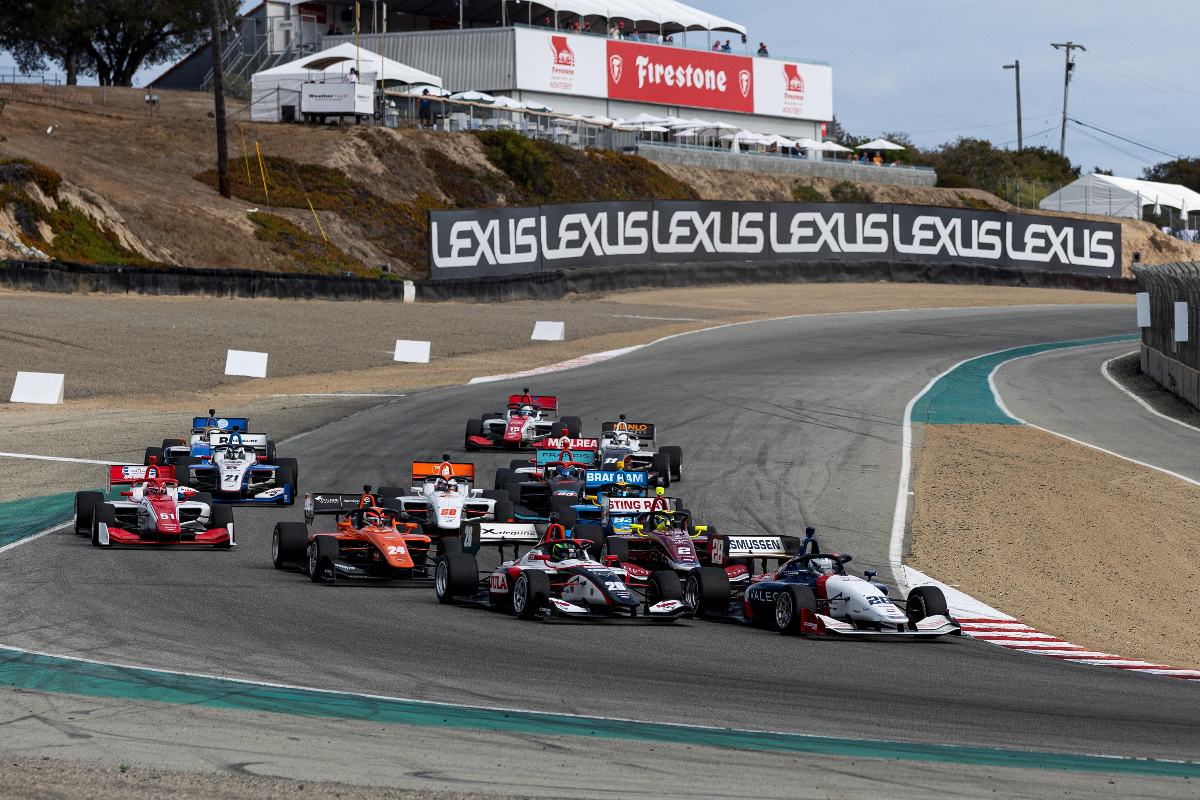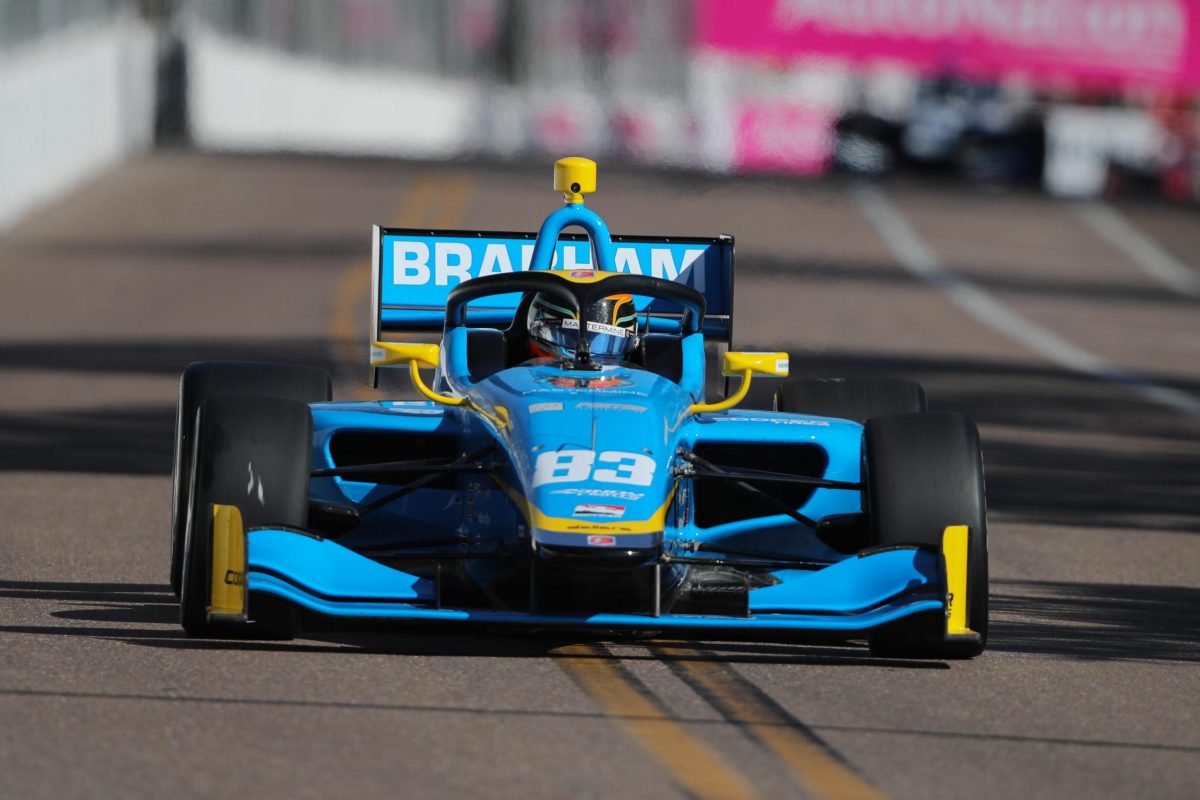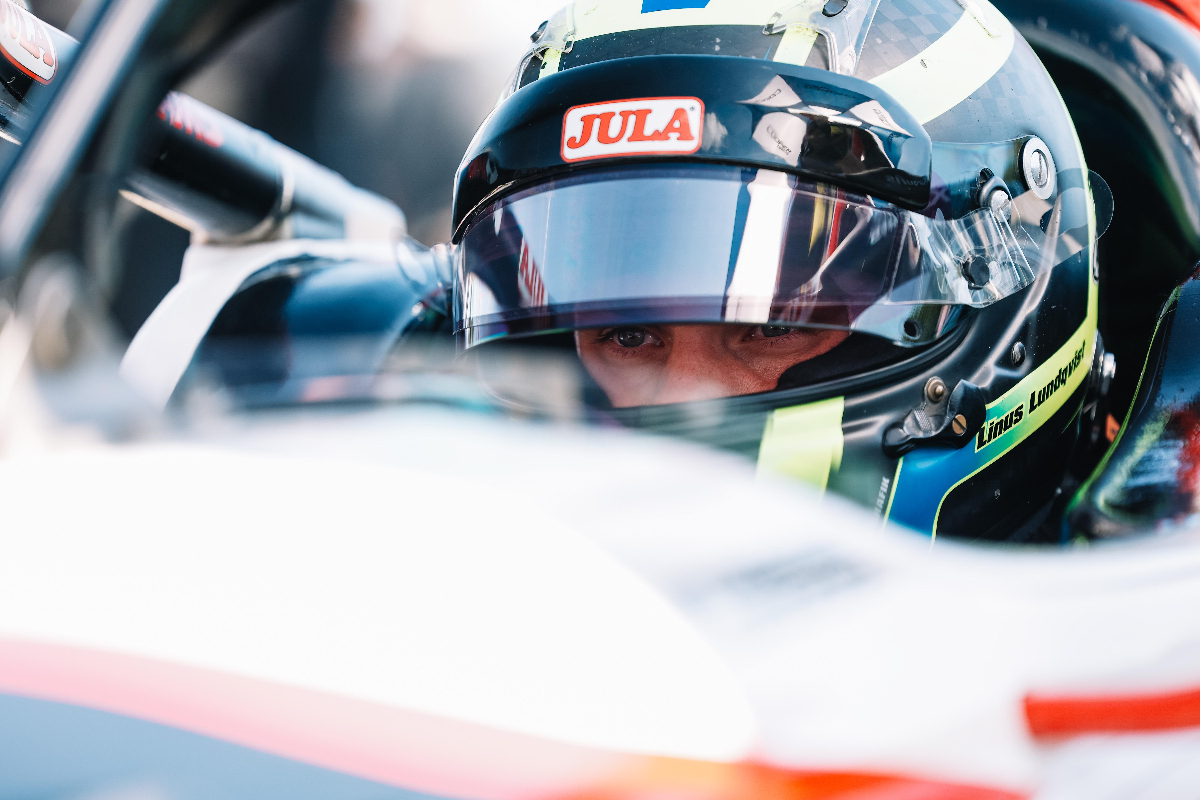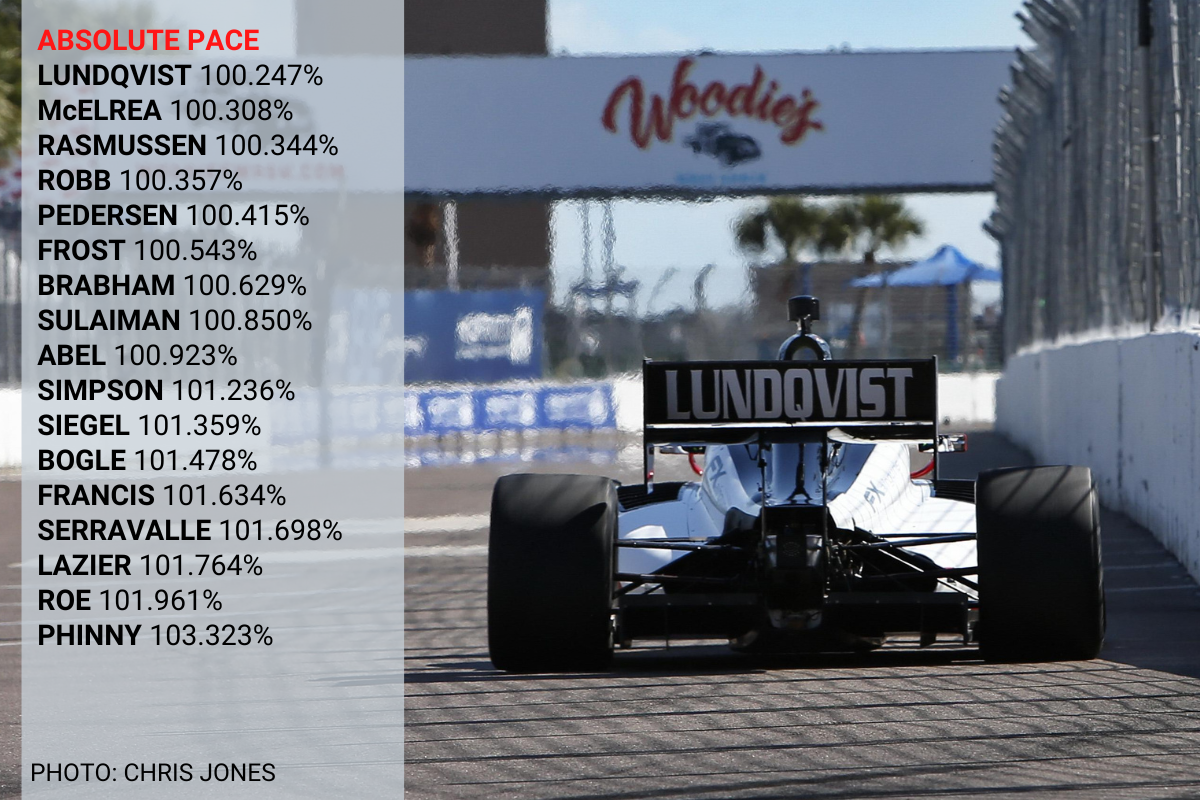
Photo: Travis Hinkle
IndyCar’s increased influence led to a signifcantly shortened calendar, less prize money but two more full-time entries on a small Indy Lights grid. There was a headline-grabbing start, but the season then stuttered
On September 24, 2021 it was announced that Indy Lights would move under the control of Penske Entertainment, owner of the IndyCar series it supports, for 2022. Promotion of the series would be by Penske, with Andersen Promotions continuing to work on the series below after eight years with Indy Lights under its direction.
IndyCar became more involved on Indy Lights sporting matters during the COVID-19 pandemic, and Cooper Tires’ deal as the spec tyre supplier was renewed for 2022. That turned out to be its last deal, with the the series switching to Firestone tyres next year to match IndyCar.
The second races at the Barber Motorsports Park, St. Petersburg, Road America, Mid-Ohio, the Gateway oval and Portland rounds were dropped for the 2022 season, as well as the second Mid-Ohio round that appeared in 2021, but the series returned to Iowa Speedway and went to the streets of Nashville for the first time.
These changes increased interest in seats, although as always it proved difficult to signifcantly grow the series’ size.
In 2021 there was 13 cars for 60% of the season, then the grid dropped to 11 cars for two rounds, and there were only nine full-time drivers. This year the first four rounds had 14 cars, with the grid dipping to 12 at three rounds and there being 13 cars for the other four events. For the first time since 2017, the number of full-time drivers was in double figures too at 11.
Less races meant each had more importance in the title race, and this was a far closer field than in previous years across the top half of the order. Had there been one more race, five drivers would have been in contention to be series runner-up.
But ultimately there was never truly a point in the season where it looked like anyone bar Linus Lundqvist would win the title except for the St. Petersburg season opener.

Photo: Penske Entertainment / Chris Owens
Debutant Hunter McElrea convicingly led the first quarter of the race from pole before crashing out from a mistake while he was approaching a backmarker to lap, then his Andretti Autosport team-mate Christian Rasmussen took over at the front until he ran out of fuel with two laps to go. That handed victory to series returnee Matthew Brabham, who was aiming to reignite hopes of an IndyCar career after a brief stint in Formula E and then becoming a star of Stadium Super Trucks.
Following that race, HMD Motorsports’ Lundqvist claimed five pole positions on the trot and converted four of those into victories, putting him 84 points clear of closest rival Benjamin Pedersen after four rounds. Global Racing Group with HMD’s Pedersen finished second in three of the first five races, but his form dipped before a resurgance later in the year where he was rapid in Nashville but finished sixth, made the podium at Gateway and earned his first Indy Lights win after 32 starts with a perfect drive at Portland. A few weeks later AJ Foyt Racing announced him as one of its IndyCar drivers for 2023.
But Pedersen only came fifth in the Indy Lights standings. Meanwhile champion Lundqvist – who claimed a fifth win of 2022 in Nashville and only once finished outside the top four all season – is still looking to secure his racing future.
Lundqvist has spent almost all year knocking on the trailer and garage doors of IndyCar teams trying to sell his services as a driver, but confusion reigned for almost a month after he won the title as it emerged Indy Lights’ prize package had been heavily revised and the scholarship to spend on racing in IndyCar was now less valuable. And worst of all, as with many other elements of the 2022 season, there was little willingness from IndyCar to communicate publicly about the matter.
An IndyCar representative told Formula Scout there would be no announcement about the changed distribution of prize money, but said it would match 2021’s series prize pot of $1.2 million.
Except it wasn’t a match, as 2021 champion Kyle Kirkwood’s scholarship was valued at more than $1.3 million and Lundqvist’s at just $500,000.

Photo: Joe Skibinski
“The remaining $700,000 was distributed as race purses – which were not awarded in 2021 – for teams finishing first to fourth each race event ($20k for first, $15k for second, $10k for third, $5,000 for fourth),” the representative explained.
While the redistribution has quite likely made Lundqvist the first Indy Lights champion since Jean-Karl Vernay in 2010 to not step up to IndyCar the year after, it has made it even more attractive for teams to run cars in the series. There are 13 drivers already announced for 2023, with at least three more to come.
The difficulties in landing an IndyCar seat has overshadowed a season from Lundqvist where he had more than two times as many wins and as many poles as anyone else.
There may have not been too much difference in absolute pace between himself and rivals, and there were standout weekends for others where they were clearly the fastest on track, but series sophomore Lundqvist made use of his experience early in the season when it counted to bring home the big points hauls.
It’s not just that the rookies got faster over the season, but Andretti’s four car line-up and HMD’s four and latterly five-car fleet including Pedersen meant improvements were quicker to find between drivers in these two outfits, while the gap back to the solo entry of Ernie Francis Jr (Force Indy) and the usual two-car attacks from Abel Motorsports and TJ Speed was as much down to being outnumbered as it was the inexperience of their drivers and the standards of the teams’ work.
Not all the experienced drivers made use of their advantage, with Brabham – a single-seater returnee admittedly but an Indy Lights winner in 2014 and IndyCar racer in ’16 – not qualifying inside the top three until race 11 of the season at Gateway. HMD’s Danial Frost only cracked the top three on the grid in the race after that at Portland.
Brabham earned a second win of the year at Gateway, and thanks to five other podiums ended up third in the standings. Frost won at Indianapolis Motor Speedway but never saw the podium again and came a distant seventh in the championship.
 The surprise of the season, bar the unwelcome changes from Penske, and the driver to actually finish second to Lundqvist was Andretti’s sophomore Sting Ray Robb. He was rarely as fast as his team-mates, but made the podium in five of the first seven races and still earned two pole positions.
The surprise of the season, bar the unwelcome changes from Penske, and the driver to actually finish second to Lundqvist was Andretti’s sophomore Sting Ray Robb. He was rarely as fast as his team-mates, but made the podium in five of the first seven races and still earned two pole positions.
It took him 49 races to win in USF Pro 2000 (nee Indy Pro 2000) but he then became champion there, and there was only one top-five finish in Robb’s rookie Indy Lights season but in his second year there was only one finish outside of the top six. Consistency earned him his position in the final standings, and after claiming his maiden win at the Laguna Seca finale he then also entered the frame for an IndyCar graduation.
Laps led
1 Lundqvist 255 2 McElrea 99 3 Rasmussen 87 4 Robb 37 5 Pedersen 35 6 Frost 27 7 Brabham 6
Pedersen may well be the only graduate to the top class next year, where he will get to battle 2022’s star rookies Christian Lundgaard and David Malukas, and the worrying thing is Indy Lights looks like it’s headed towards a future where personal backing is what takes drivers to the next step rather than championship-winning calibre at this level.
None of the top three in the standings know where they will be racing in 2023, but the rest of the full-timers (bar IndyCar-bound Pedersen) are already signed up to do battle again and it looks like there could be a wide open title battle next year.
More on Indy Lights
Indy Lights rebrands to Indy Nxt 2023 driver signings Linus Lundqvist joins the podcast
2022 Indy Lights standings
| Pos | Driver | Team | Wins | Poles | FL | Points |
|---|---|---|---|---|---|---|
| 1 | Linus Lundqvist | HMD | 5 | 7 | 3 | 575 |
| 2 | Sting Ray Robb | Andretti | 1 | 2 | 4 | 483 |
| 3 | Matthew Brabham | Andretti | 2 | 1x 3rd | 3 | 471 |
| 4 | Hunter McElrea | Andretti | 2 | 3 | 1 | 460 |
| 5 | Benjamin Pedersen | GRG w/ HMD | 1 | 1 | 1 | 444 |
| 6 | Christian Rasmussen | Andretti | 2 | 1 | 2 | 440 |
| 7 | Danial Frost | HMD | 1 | 1x 2nd | 0 | 382 |
| 8 | Jacob Abel | Abel | 2x 4th | 1x 6th | 0 | 355 |
| 9 | Kyffin Simpson | HMD | 2x 5th | 1x 6th | 0 | 312 |
| 10 | Ernie Francis Jr | Force Indy | 1x 7th | 1x 7th | 0 | 299 |
| 11 | Christian Bogle | HMD | 1x 4th | 1x 7th | 0 | 298 |
| 12 | James Roe Jr | HMD | 2x 7th | 1x 9th | 0 | 219 |
| 13 | Antonio Serravalle | Abel/HMD | 2x 6th | 4x 8th | 0 | 204 |